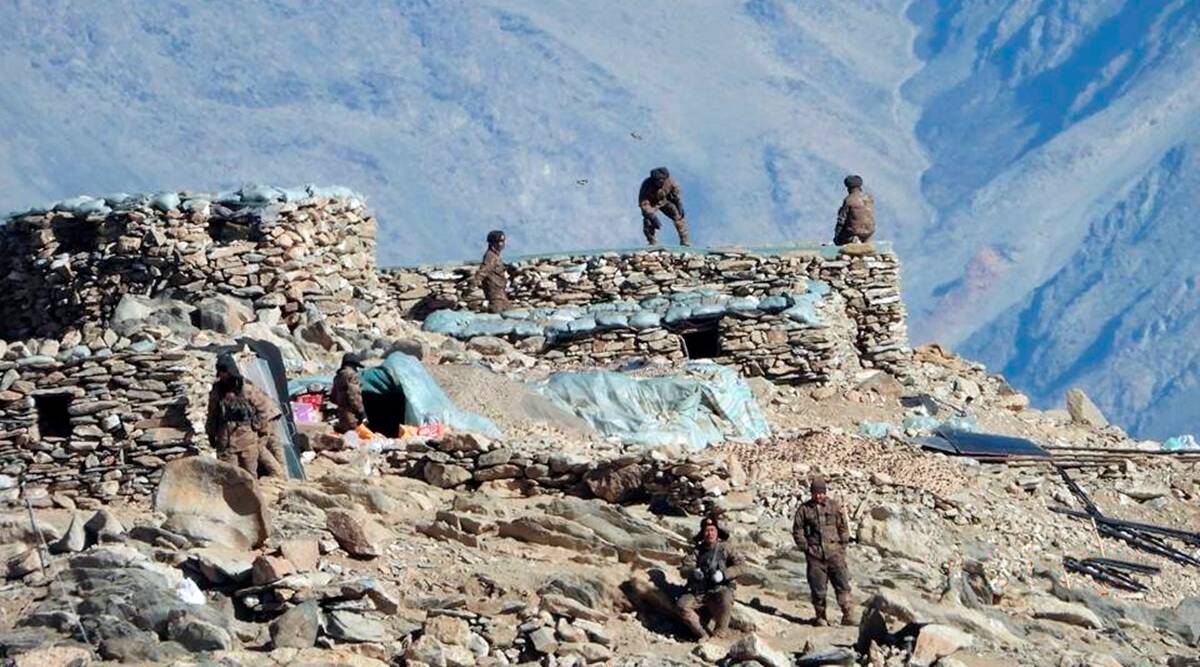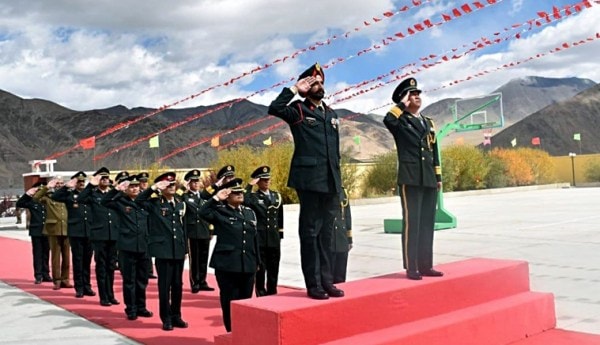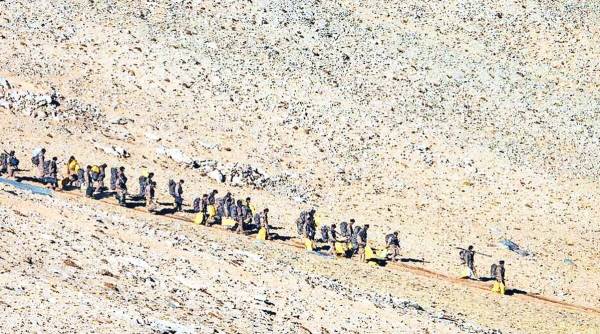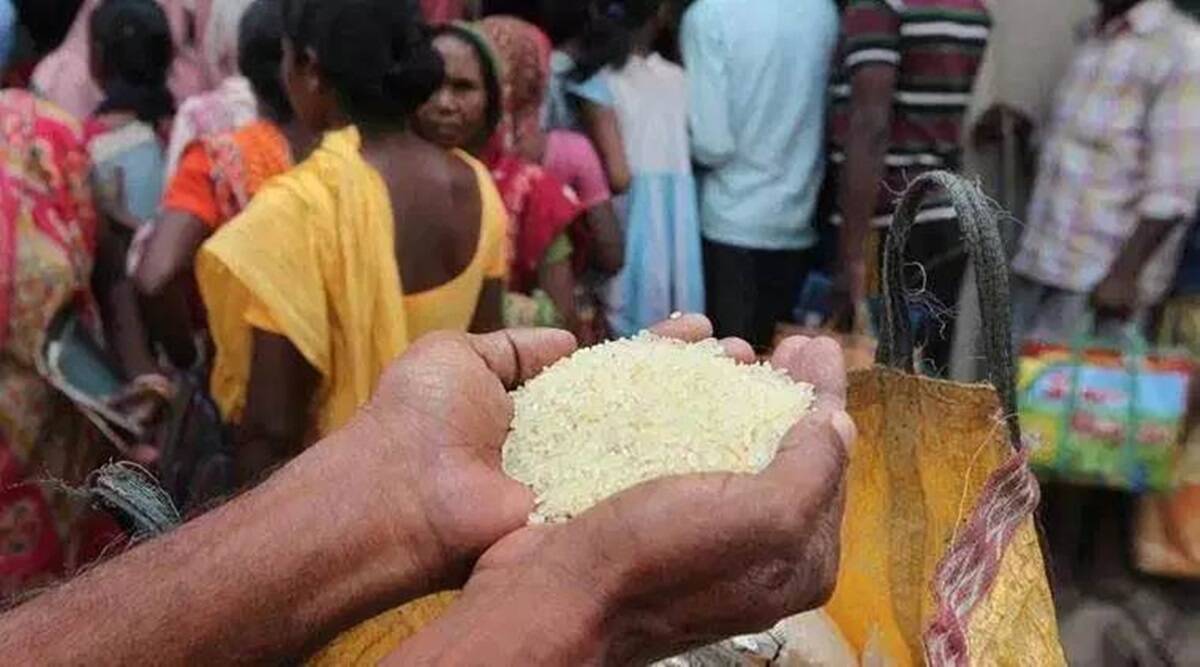
On June 15 final 12 months, Ladakh’s Galwan Valley witnessed a violent conflict between the Armies of India and China. The conflict, by which 20 Indian troopers have been killed, was one of many worst in 45 years, and led to a navy standoff with China and a minimum of 11 rounds of navy talks for the disengagement course of.
What occurred on June 15, 2020?
Tensions had been excessive on the Line of Precise Management (LAC) weeks earlier than the conflict, with each side deploying an elevated variety of troopers on the border. India contended that China had moved into the Indian facet of the LAC . Talks held between native navy commanders of each the armies on June 6, led to a mutually-agreed disengagement course of.
A buffer zone was to be created between the 2 armies, nonetheless, an Indian commander seen a Chinese language camp within the space and went to examine. This escalated right into a combat, leading to deaths and accidents. Whereas no pictures have been fired, a year-end evaluate by the Defence Ministry states that China used “unorthodox weapons” at Galwan.
In February 2021, China acknowledged for the primary time that 5 Chinese language navy officers and troopers have been killed within the japanese Ladakh conflict.
Indian military troopers relaxation subsequent to artillery weapons at a makeshift transit camp earlier than heading to Ladakh, close to Baltal, southeast of Srinagar, June 16, 2020. (Supply: Reuters)
A sequence of navy talks finish in stalemate
A gathering on the stage of Main Generals of each armies occurred on the Patrolling Level 14, following the conflict, which introduced the scenario beneath management. Ten Indian Military personnel, captured by the Chinese language, have been returned on June 17 after talks on the diplomatic and navy stage.
Prime Minister Narendra Modi additionally addressed the nation, stating, “India needs peace. However on provocation, India will give a befitting reply.”
A gathering between Corps Commanders of the Indian and Chinese language armies ended with “mutual consensus to disengage” on June 16. Nonetheless, no plan was drawn up and a sequence of conferences and diplomatic talks resulted in a stalemate.
“Military is getting ready for the lengthy haul and the standoff is anticipated to proceed nicely into the winter,” sources within the military stated, after a gathering between XIV Corps Commander Lt Basic Harinder Singh and South Xinjiang Navy Area Commander Main Basic Liu Lin.
India sought a restoration of establishment ante – of troops returning to places earlier than the faceoff started in Might. Whereas, Chinese language International Ministry spokesperson Zhao Lijian in a sequence of tweets, 5 days after the conflict, claimed that the “Galwan Valley is positioned on the Chinese language facet of the Line of Precise Management within the west part of the China-India boundary. For a few years, the Chinese language border troops have been patrolling and on obligation on this area.”
 A ceremonial Border Personnel Assembly (BPM) on ‘Chinese language Nationwide Day’ held at Chinese language BPM hut at Moldo in Jap Ladakh in 2020; Delegations of each international locations reaffirmed their dedication in direction of enhancing current cordial relations and sustaining peace. (Photograph: ANI)
A ceremonial Border Personnel Assembly (BPM) on ‘Chinese language Nationwide Day’ held at Chinese language BPM hut at Moldo in Jap Ladakh in 2020; Delegations of each international locations reaffirmed their dedication in direction of enhancing current cordial relations and sustaining peace. (Photograph: ANI)
The sequence of of conferences continued until finish of 2020, with an escalation in September, when Chinese language PLA claimed that Indian troops had fired warning pictures, prompting it to “take countermeasures to stabilize the scenario on the bottom” in Pangong Tso, some of the contentious sectors in Ladkah,
Breakthrough and disengagement
The first main breakthrough in talks to resolve the nine-month navy standoff was solely reached in February 2021. China’s Defence Ministry introduced that Chinese language and Indian troops on the southern and northern shores of Pangong Tso started “synchronized and arranged disengagement”. The settlement was according to the consensus reached between Corps Commanders after they final met on January 24 in the course of the ninth spherical of navy talks.
Senior Colonel Wu Qian, spokesperson for the Chinese language Ministry of Nationwide Protection, in a written assertion, stated: “The Chinese language and Indian frontline troops on the southern and northern financial institution of the Pangong Tso Lake begin synchronized and arranged disengagement from February 10.”
In a press release, Defence Minister Rajnath Singh stated that “there are nonetheless some excellent points that stay concerning deployment and patrolling on LAC” and talked about that “our consideration can be on these in additional discussions”.
 Chinese language troops disengaging from the banks of Pangong lake in japanese Ladakh. (Photograph: ANI)
Chinese language troops disengaging from the banks of Pangong lake in japanese Ladakh. (Photograph: ANI)
Other than the north and south financial institution of Pangong Tso, the opposite friction factors embody PP15 in Sizzling Springs, PP17A in Gogra Put up space, PP14 in Galwan Valley and the Depsang Plains within the far north the place Chinese language troops have been blocking Indian troopers at a spot known as the Bottleneck, stopping them from accessing their conventional patrolling factors PP10, PP11, PP11A, PP12 and PP13.
Following the disengagement within the north and south banks of Pangong Tso, Military Chief Basic M M Naravane said on Might 19, “with no transgressions occurring with no violations of this disengagement, I believe the belief has constructed up.”
He added that the troop ranges proceed to be what they have been on the peak of stand-off.







